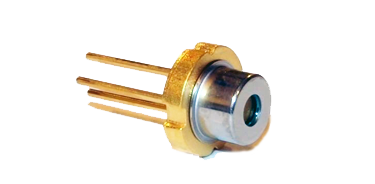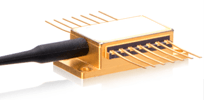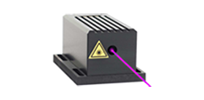405nm Laser Diodes
Advanced performance products for scientists and engineers.
405nm Blue Laser Diode Definition :
The most common blue laser is a 405nm semiconductor diode laser. This wavelength and laser type is used more than any other in the blue range. Its use in high volume consumer product applications forced economies of scale which make this laser diode wavelength affordable and simple to procure. However, relative to red laser diodes, 405nm blue devices are more expensive and more difficult to procure. The 405nm wavelength is a result of the specialty gain medium semiconductor materials used in the wafer growth stage of these lasers. The materials include gallium nitiride or indium gallium nitride.The company credited with the creation of the 405nm laser diode, Nichia Corporation, is still the primary manufacturer of this laser wavelength. Other companies who manufacturer these devices include Sharp and Osram. They offer devices with optical output power from 10mW up to 1200 mW from TO-can type packages. Their are low power (ie less than 100mW) single-transverse mode devices available in either 3.8mm or 5.6mm TO-can packages. The higher power multi-transverse mode devices are available up to approximately 1200mW and are offered in a 9mm TO-Can package. Most of the Nichia laser diodes are mounted in the TO-can header with an internal zener diode. The typical threshold current point for these lasers is between 50mA and 400mA. 405nm blue lasers have a higher operating voltage than any other laser diode type. The operating voltage ranges from 4 to 8 volts, whereas a typical laser diode operates in the 1.5V to 2V range.Shop 405nm Laser Diodes »




